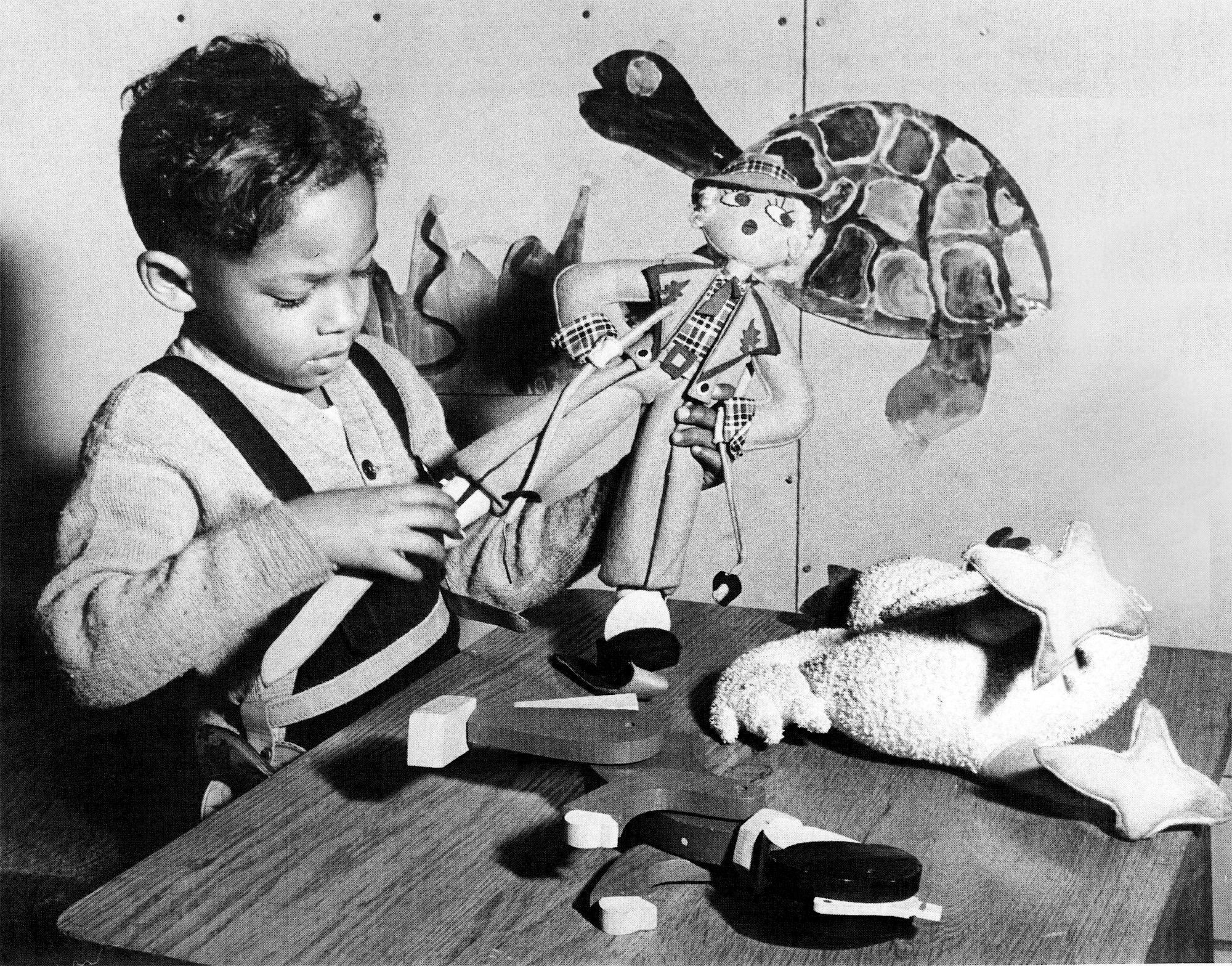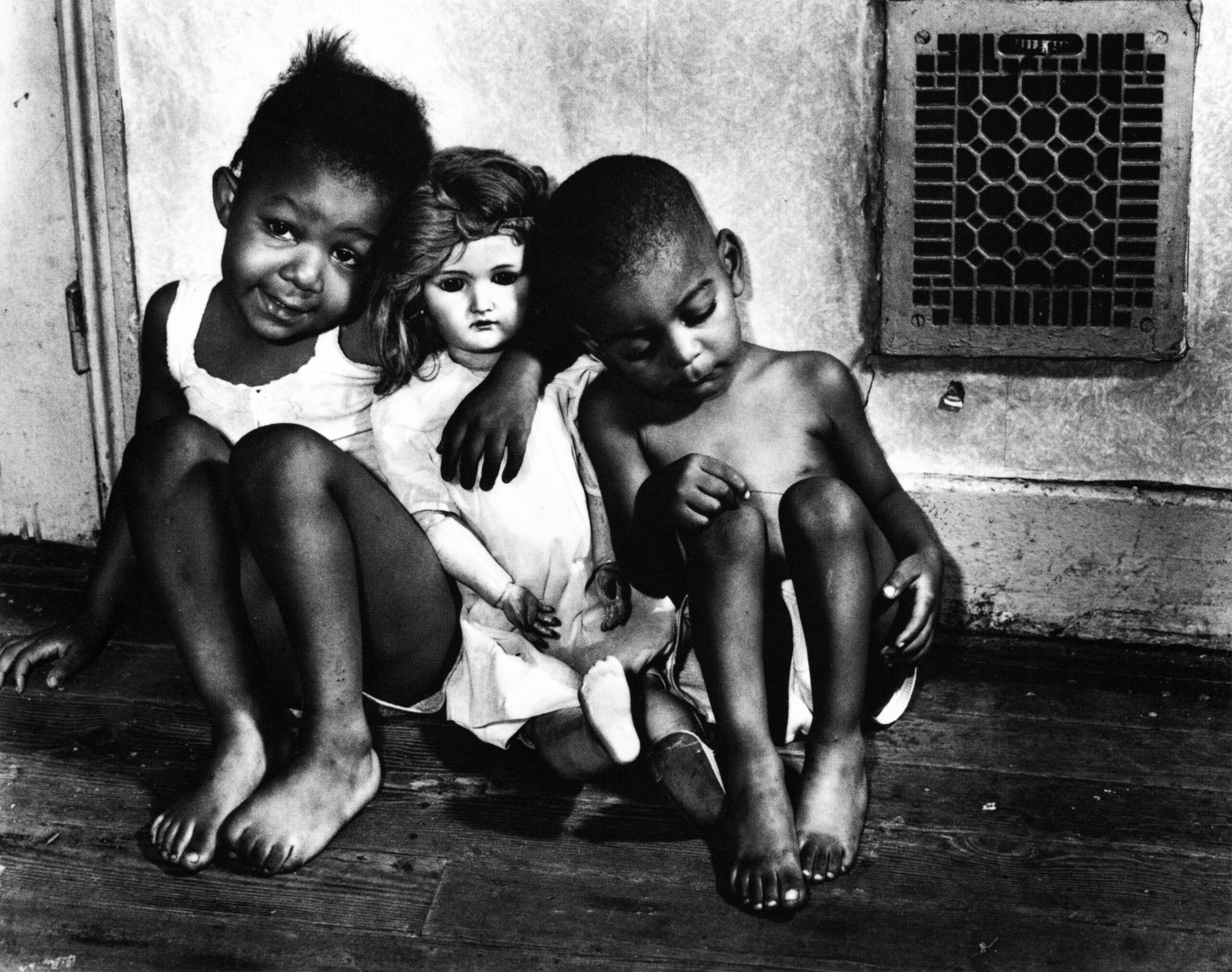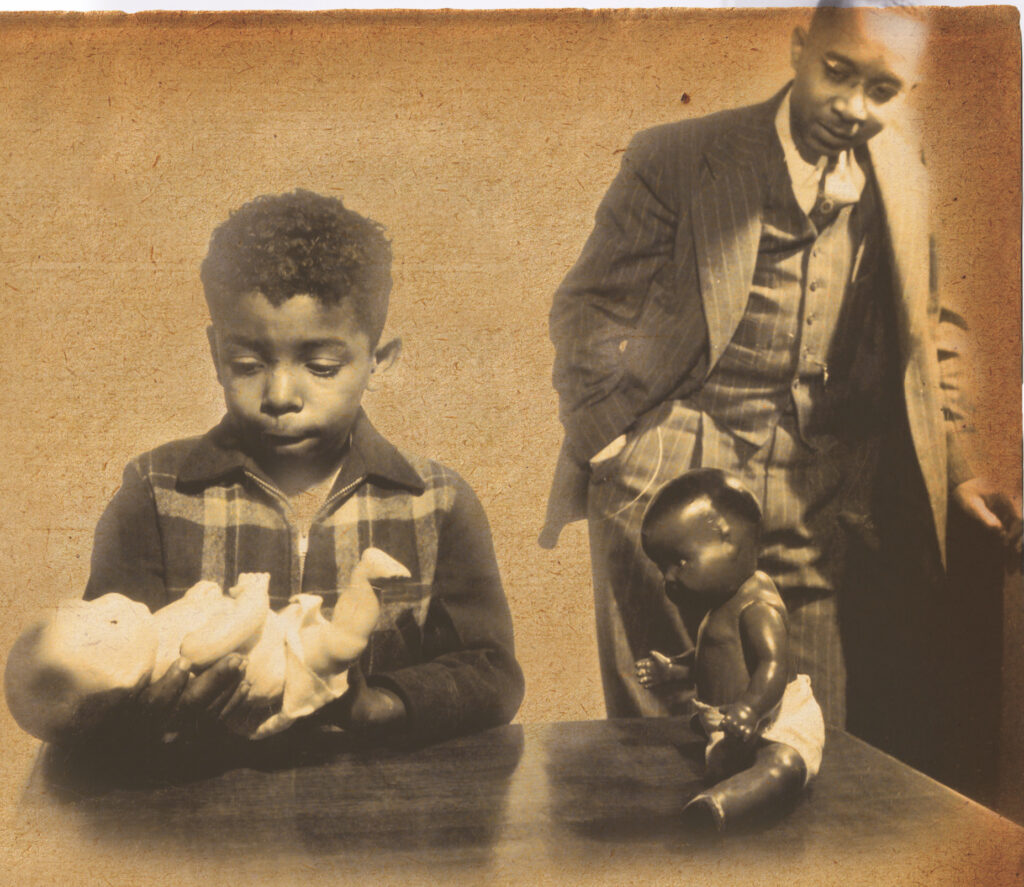Black is Beautiful: The Doll Study and Racial Preferences and Perceptions
Psychologists Kenneth Bancroft Clark and his wife, Mamie Phipps Clark, designed the “Doll Study” as a test to measure the psychological effects of segregation on black children. The Clarks’ “Doll Study” became the first psychological research to be cited by the Supreme Court and was significant in the Court’s decision to end school segregation.

A child at Northside Center for Child Development being tested. (Photo courtesy of the Library of Congress)

African American children with a white doll, 1942.
(Kasher, The Civil Rights Movement; photograph by Gordon Parks)

Using four plastic, diaper-clad dolls, identical except for color, African American children between the ages of three and seven were asked questions to determine racial perception and preference. Discouragingly, the majority of the children preferred the white doll and attributed positive characteristics to it, while attributing negative characteristics to the black doll. The Clarks concluded that “prejudice, discrimination and segregation” caused black children to develop a sense of inferiority and self-hatred. Clark concluded, “If society says it is better to be White not only White people but Negroes come to believe it. And a child may try to escape the trap of inferiority by denying the fact of his own race.”1
During the study, the following questions were asked: 1. Give me the doll that you want to play with. 2. Give me the doll that is a nice doll. 3. Give me the doll that looks bad. 4. Give me the doll that is a nice color. 5. Give me the doll that looks like a white child. 6. Give me the doll that looks like a colored child. 7. Give me the doll that looks like a Negro child. 8. Give me the doll that looks like you.
| Looks Bad | Play With | Nice Doll | Nice Color | Preference | |
| Black Doll | 59% | 32% | 38% | 38% | 36% |
| White Doll | 17% | 67% | 59% | 60% | 62% |
| Don’t Know | 24% | 1% | 3% | 2% | 2% |
| North (integrated schools) | South (segregated schools) | |
| Prefer to play with the white doll | 72% | 62% |
| White doll is “nice” | 68% | 52% |
| Black doll is “bad” | 71% | 49 |
1 Clark, 1955, p. 37.


